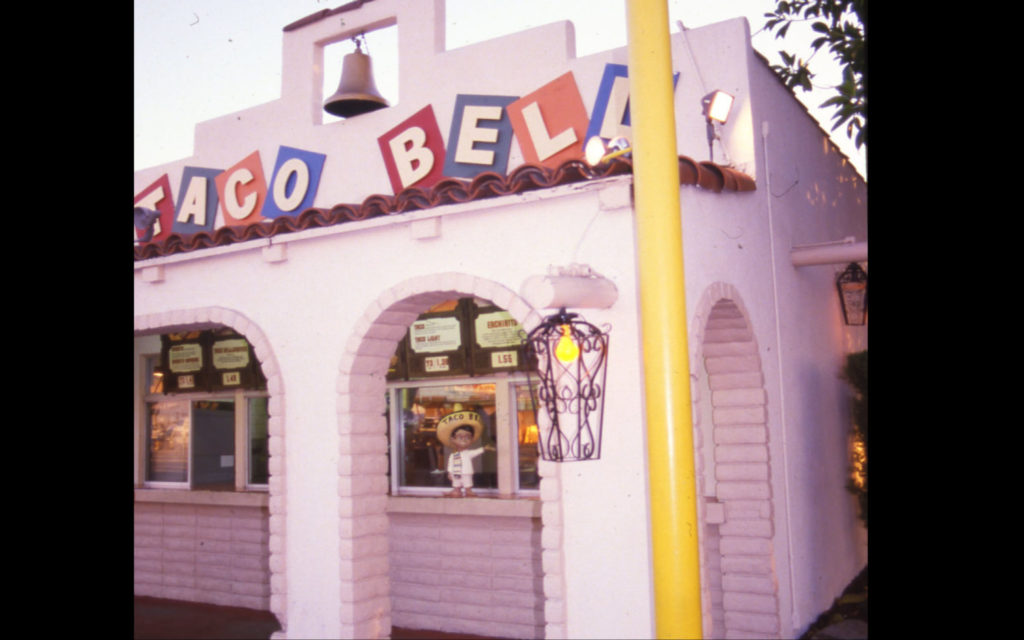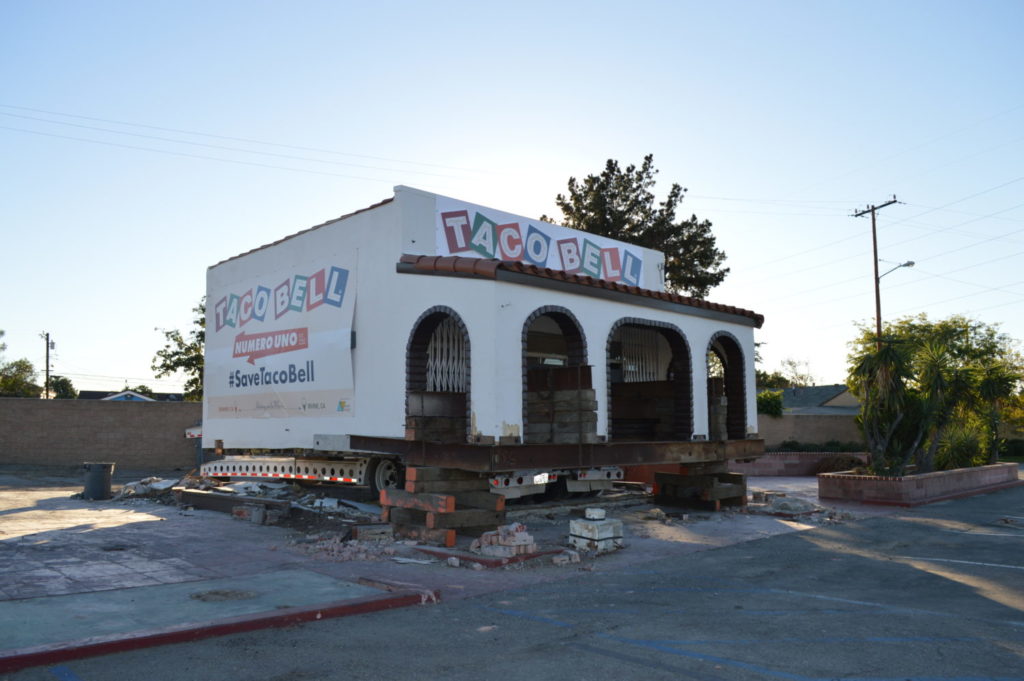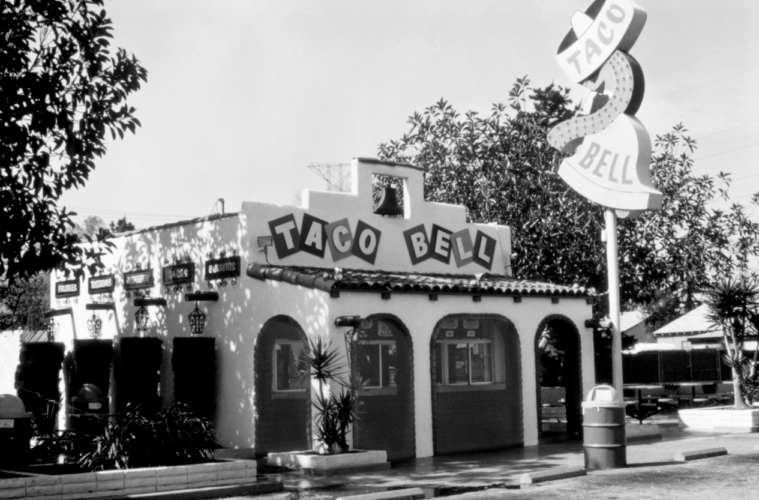What do you do when an integral part of your existence is threatened by forces outside your control? You move heaven and earth to save it, of course! A few years ago, Taco Bell’s original location — lovingly named “Numero Uno” — established by founder Glen Bell in 1962 in Downey, California, found itself in a somewhat similar, albeit less severe, conundrum. The company immediately began the process of saving the existing building, which had long since ceased operation as a branch of the much-loved Mexican-inspired, quick-service restaurant brand but nonetheless held an important place in its history.
“As part of our communications team, we have a room that we call the fishbowl that has monitors rotating real-time social listening,” shares Matt Prince, senior manager, public relations and brand management. “On there one morning, they talked about how the first Taco Bell was in threat of being demolished and we had no idea.” A local publication in Downey mentioned the impending doom of the original location. Though it had only operated there until about the mid-‘80s, with several other businesses calling it home until 2014, the landowners had decided to move forward with a new development.

Taco Bell Numero Uno (Courtesy of Taco Bell)
The plan to save Numero Uno was to raise the building from its foundation, put it on a flatbed truck and drive it from Downey to the Taco Bell headquarters in Irvine. The route map was shared publicly ahead of the move in November 2015, turning it into a social event for fans. “This moment in time for Taco Bell was a great piece of history. We wouldn’t be able to have Taco Bell today if it wasn’t for this individual restaurant,” says Prince. “It’s so inspiring to see this 400-square-foot building the size of a two-car garage where it all started to become the global brand that it is today. We knew there would be an appetite for people to be a part of the journey.”
Sure enough, on the route that day there were people with signs on corners, cheering along the way as some followed the entourage while honking their horns. “The sight of the giant building being taken down the street was enough to stop traffic; the look on people’s faces, whether or not they knew what was happening, was priceless,” shares Prince. “We moved the building at about 11 p.m., had a police escort, and about 20 to 30 fans that were caravaning behind us. I was right behind the building with a livestream camera on my truck, there were helicopters above. It was probably the closest I’ll ever get to a high-speed chase, it was pretty invigorating.”
The truck carrying the building moved at about 24 mph and took a little under two hours to get to Irvine, where the building is resting safely at the parking lot of the headquarters, wrapped and protected in its current condition, awaiting the verdict on its next phase of life. Lease extension negotiations put a pause on plans to renovate it to its original glory from 1962, but discussions have resumed now that the company has renewed its office space at the Irvine Spectrum campus until 2030. Taco Bell has always been headquartered in Southern California, and a majority of that time, about 40 years, has been in Irvine specifically.

Taco Bell Numero Uno (Courtesy of Taco Bell)
“We have great ties to Southern California and Irvine. The biggest challenge for us as a brand is growth, so we felt that over the next 10 years, this space had enough opportunity for us to grow,” shares Prince. “Irvine’s a wonderful place to do business, we have a lot of history here and wanted to keep it going and stay where our roots were.” The Yum! Brands subsidiary also announced in the new year its commitment to making all consumer-facing packaging recyclable, compostable or reusable by 2025 worldwide, and continues to champion easy and accessible vegetarian options around the world.
The company has come a long way from opening its 100th restaurant in Anaheim in the ’60s and going public with 325 restaurants in the ’70s, to launching its Taco Bell mobile ordering and payment app, retail collaborations and pop-up dining experiences in the past decade. Part of that growth has also included efforts such as its Feed The Beat program, which has helped support more than 1,700 new artists and bands since 2006, and the Taco Bell Foundation, established in 1992, that has reached more than 3.5 million young people across the country.
The foundation has awarded more than $83 million in grants and scholarships, focused on education and career readiness. Its Live Más Scholarship, first launched in 2015, is an opportunity for students anywhere in the country to focus on their passions beyond what is typically seen through scholarships today that are often academically- or athletically-inclined. “We wanted to provide some financial benefit to people who have a passion for creativity,” says Prince. This year, $6 million in scholarships will be awarded, bringing the total to $17 million. “It has been amazing to be able to donate so much money back to the creative spirit,” he adds.
While Taco Bell’s corporate headquarters continues to flourish at its Irvine home, the fate of Numero Uno remains undecided yet. Unable to part with more details at this time, Prince shares the goal is to do something for fans and guests to visit and experience the history of Taco Bell. “My goal with the future of Numero Uno would be to have more open fan-engagement experiences for the public, whether it’s a museum or space that changes based on what’s happening with the brand,” says Prince. “It’s not as easy to just put it somewhere and call it a day. We want to make sure we do it right.”
Advertising disclosure: We may receive compensation for some of the links in our stories. Thank you for supporting Irvine Weekly and our advertisers.

